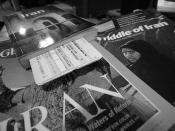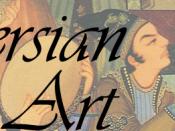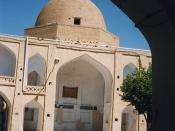What do you associate Persia with? Ask this question to anyone and the most likely answer you will get is rugs. Indeed, Persia and rugs are closely intertwined. In the eyes of many, Persian rugs are invaluable pieces of art that require great skills and perseverance to make. If you look at the Persian rugs closely, they tell a saga, one about the Persians (nowadays Iranians), their belief, their likes, their families and their traits.
The Persian rugs reflect Persians' strong dedication to their religion. Persia's main religion is Muslim, Shiism to be specific. Even back in the 16th Century under the Safavid Dynasty, the golden age of rug-weaving in Persia, Shiism was already the state religion. Nowadays, 98.5% of the Iranians are Muslims. Their Islamic faith has influenced their traditions, customs and art greatly. Persian rugs are the epitome of Islamic art. And from them, we can easily see Persians' dedication to their Islamic religion.
The Persian rugs have many motifs and designs from which I have noticed Iranian's respect for Allah. The Persian rugs come only in geometric designs, floral patterns, and pictures of animals and nature. There is not a single depiction of a human in all of the rugs I have seen so far. I find out that not using human pictures on the rugs is intentional. Such phenomenon reflects Persians' overt reverence to Allah. According to the Koran, humans are made in the image of Allah. Therefore, placing a picture of a human is similar to making a depiction of Allah. Yet to the Muslims, Allah is perfect and there is no image, however perfect, can represent his greatness. Therefore the Persians do not put a picture of a human in the rugs out of reverence to Allah.
The intentional flaw in each Persian rug...


